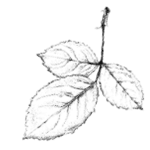
We use natural fibers such as pure mulberry silk, organic canvas, modal habotai and modal cotton. The bags and footwear have trimmings of vegan leather. The lining for the bags is in pure cotton and is block printed with vegetable dye.
We are always looking for sustainable alternatives and making the best of the limited resources available.
Keeping the inside as eco friendly as the outside, the inner fabric used for bags is printed with vegetable dyes, using a hand carved block of the logo. The cloth is made in a sixteen step process of washing, dyeing, printing, and drying, which requires a high level of skill in order to keep colors fast and even.
Printers prepare fabric for printing by washing it to remove starches, wax and impurities and then dying it with myrobalam. Pomegranate seeds, gum, Harde powder, wood, flour of Kachika and locally cultivated Indigo are some of the natural resources that are used for block printing.
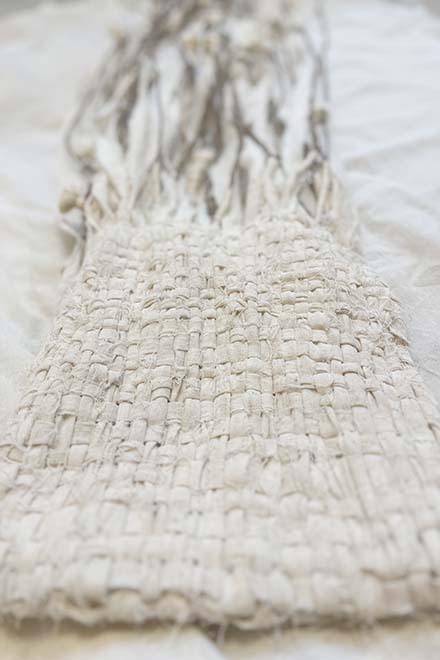

The Kala cotton initiative by Khamir is born out of the idea to create a new value chain to Kutch while providing sustainable livelihood to the artisana and bringing global recognition to Kala Organic Cotton Organic by default, Kala Cotton is mostly grown in Kutch without the use of irrigation, chemical fertilizers and pesticides. Kala Cotton generates 109 grams of CO2 equivalent greenhouse gases per 1 kg seed cotton whereas hybrid/Bt Cotton generates 628 grams. Water and energy efficient it is genetically very pure.
Hemp has inherent antimicrobial properties from UV rays. It is mold resistant, breathable and gets softer with every wash. Sustainable and biodegradable it is the strongest natural fibre and needs very little water to grow.
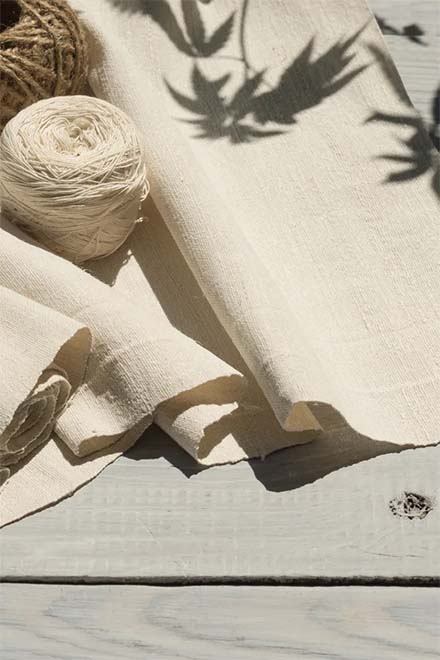
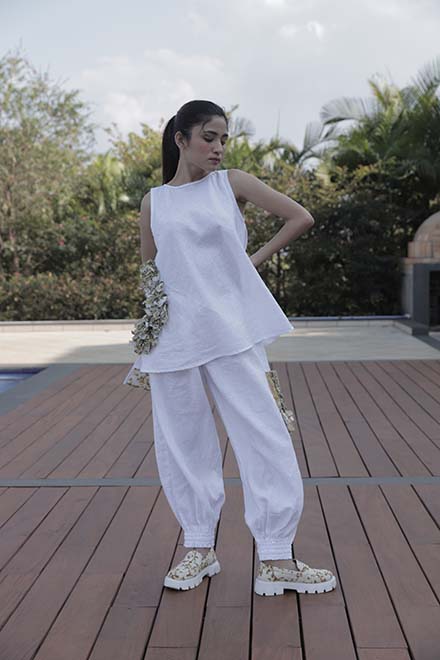
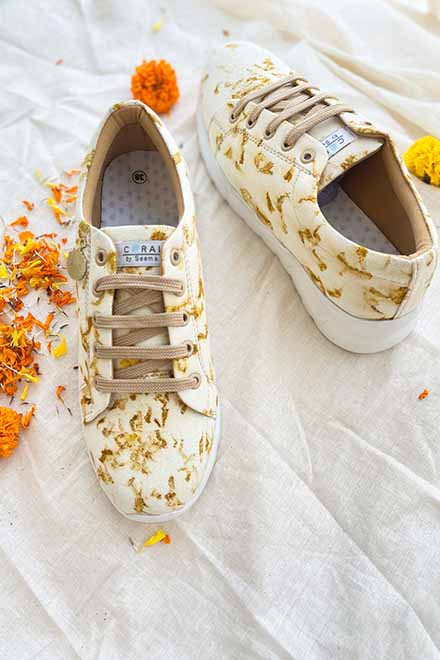
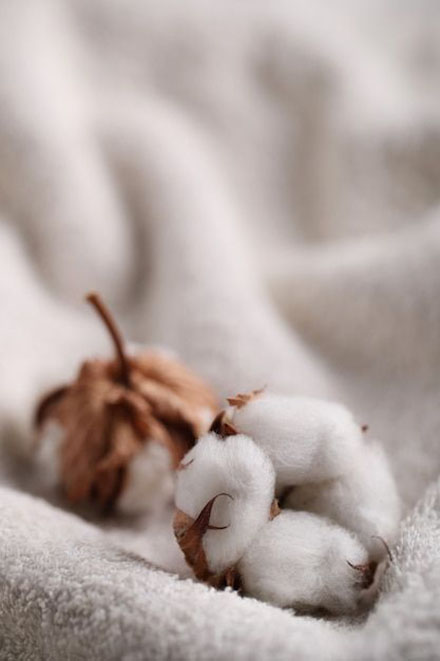
Grown without the use of toxic and persistent pesticides and synthetic fertilizers and using methods that have a low impact on the environment.
One of the unique benefits of silk is 100% natural, odorless and hypoallergenic and contains a natural protein called sericin that reduces the possibility of an allergic reaction.
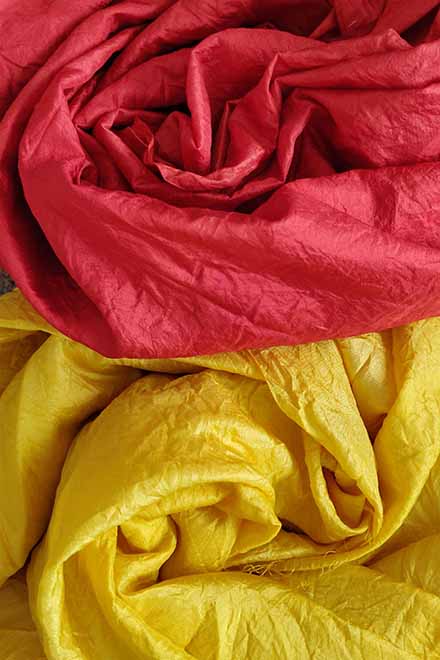
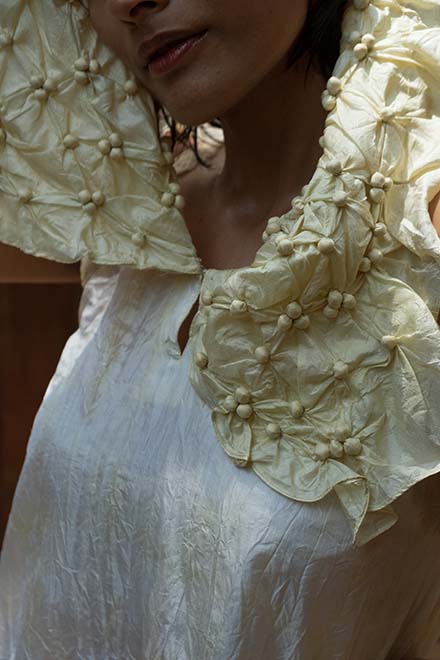
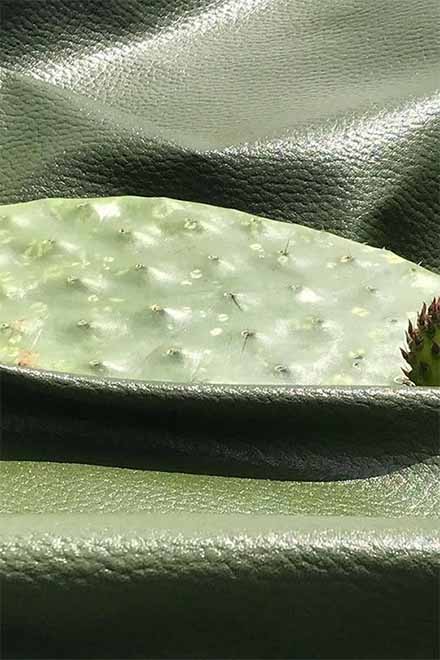
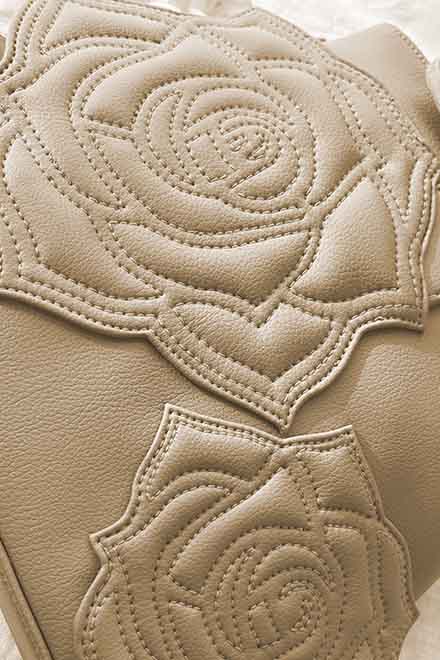
Our accessories and trimmings are in Desserto® – a highly sustainable plant based material as an alternative to leather made from cactus pulp. The world’s first highly sustainable and environmentally friendly organic material made of Nopal cactus, also known as the prickly pear. Cow-derived leather has almost three times the negative environmental impact as its synthetic counterparts, including polyurethane (PU) leather.
Synthetic dyes, which rely on heavy metals to bond color to fabric, pose a significant threat to our environment. These dyes are non-biodegradable, leading to severe water pollution and the destruction of ecosystems, particularly in areas where synthetic dye houses are situated. In stark contrast, natural dyes harness the power of elements found in nature, such as roots, flowers, leaves, seeds, and even food waste. They offer an eco-friendly alternative, promoting energy efficiency and minimizing water consumption.
Moreover, the safe disposal of natural dye residues does not harm the environment. The remarkable advantage of natural dyeing lies in its ability to infuse healing properties from plant sources into the fabric. As the skin is the body’s largest organ, it readily absorbs these beneficial properties, enhancing the overall well-being of individuals.
Some of the ingredients used at the studio:
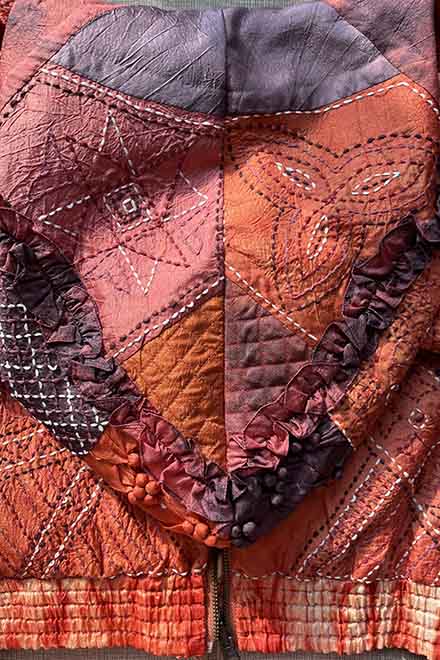
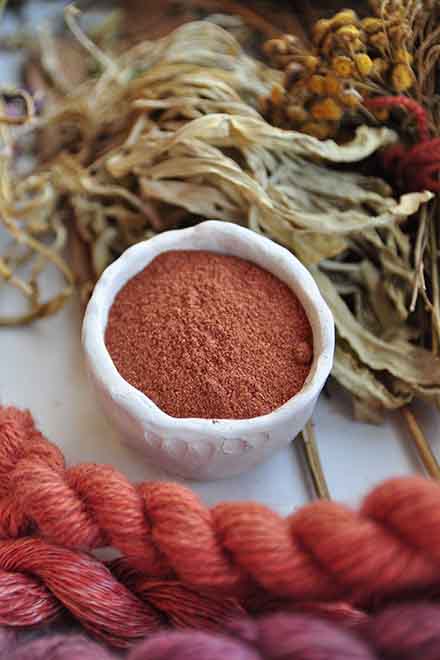
Sappan wood gives a beautiful vibrant pink and is a plant with medicinal properties. Known in Ayurvedic medicine for its’ antibacterial and anticoagulant properties, it is prepared as a hot drink throughout Indonesia and India, sometimes mixed with other spices.
The magical red you find in our collections is nothing but the madder root. This potent bright red root is extensively used for preparing various formulations aimed at detoxifying the blood, treating skin diseases, improving complexion, remedying liver diseases and many more.
We use myrobalan as a base for many techniques, and gives a lovely ivory color. Harde powder is a magical remedy that holds high significance in treating countless health problems including indigestion, gastritis, lung disease, obesity, impotence, cough, cold, asthma, vision defects, urinary tract infections and hair problems.
It is also useful in treating skin diseases, controlling itching and reducing white patches on the skin. As a herb, it helps provide healthy skin.
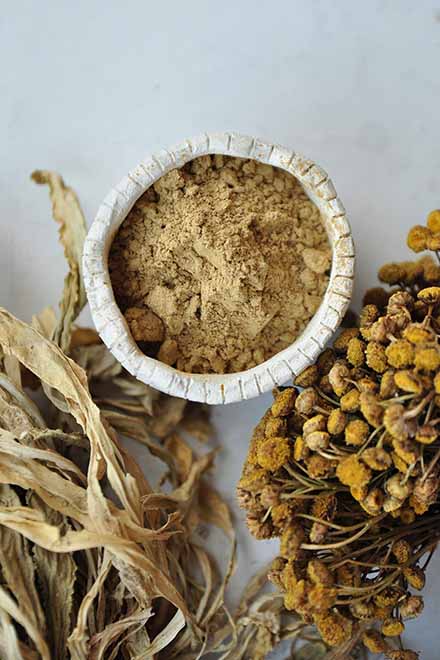
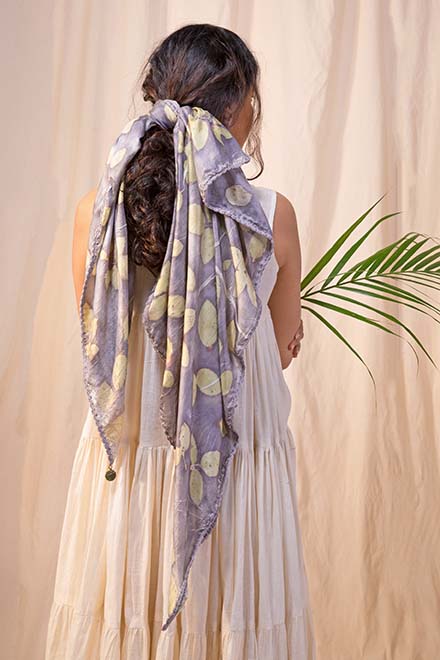
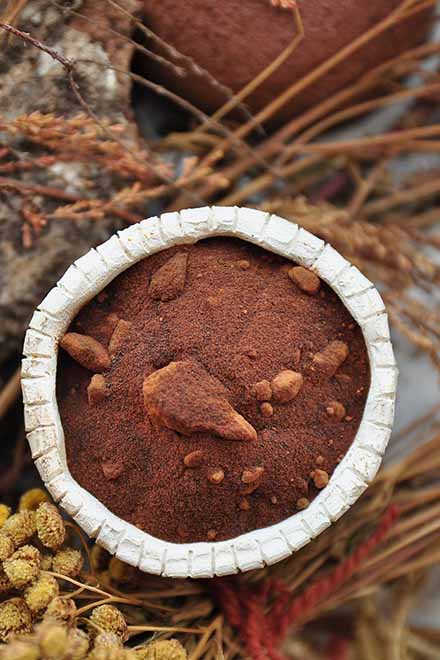

The rich tan color of our accessories is from catechu. Cutch is used in medicine as astringent. It also increases appetite. In India and eastern countries, it is used in betel leaves for chewing. . Catechu is used for swelling of the nose and throat, swelling of the colon, indigestion, osteoarthritis, and cancer.
Influenced by natural surroundings our designs are a clear reflection of the love for the elements of nature. The designing process includes experimenting with materials and recipes to have a positive impact on the world, in the best way that we possibly can.
Hand-dyed and bundle printed we use ingredients like flowers, roots, leaves and seeds, and their extracts. Each piece is handcrafted and goes through various processes and techniques.
By using sustainable materials and components and producing long lasting quality artisanal designs, we hope to reduce environment impact.
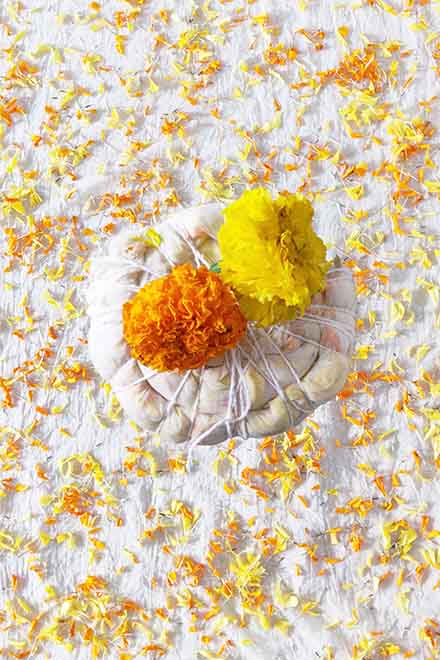
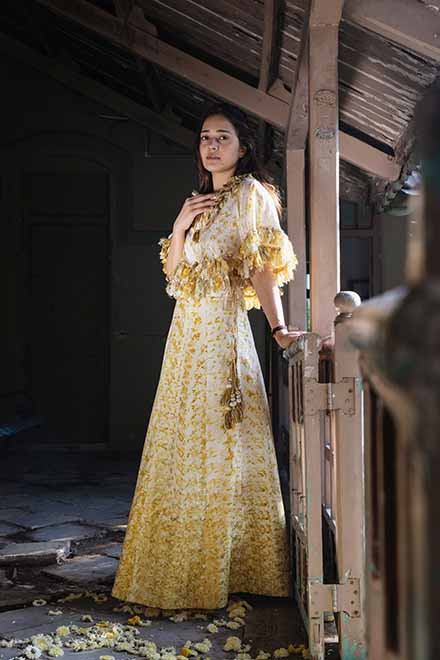
A collection by a meditative and magical process of laying out flowers and unbundling. Tightly rolled bundles of scattered flowers or peels are steamed to create beautiful prints.
A work of art, each bundle is full of surprises resulting in unique prints. The process requires steam and is therefore extremely energy efficient.
Techniques of tie and dye are used on lengths of fabrics hand-dyed in madder root, sappanwood, henna, marigold flowers, pomegranate peels and catechu dyebaths. Irregularities and imperfections of natural dyeing makes every piece an exclusive purchase.
A textile dyeing process used for thousands of years, with colors that link us to the natural world. Traditionally cloth was dyed with natural dyes from plants that offered their attributes through the color passing on the healing benefits to the wearer.
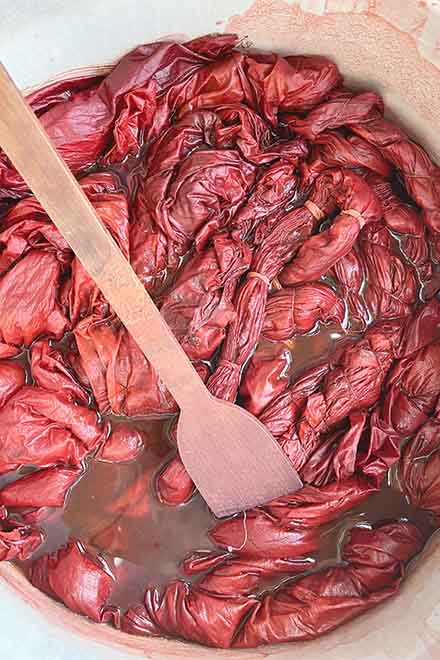
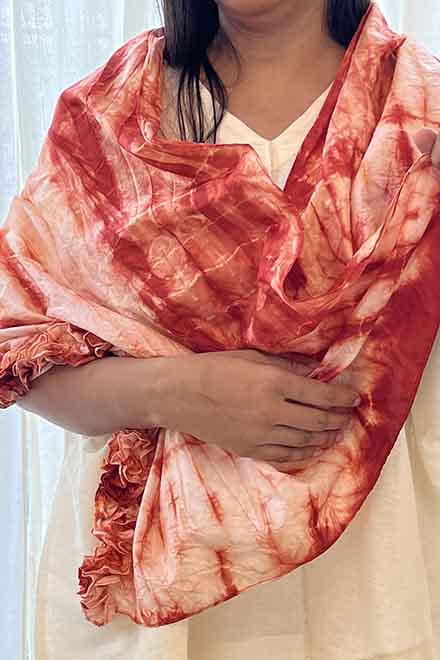


With a plethora of scraps that have been left over from our production, bigger scraps are puzzled together to create ‘one of a kind’ zero-waste statement pieces in garments and accessories.
Eco–printing or botanical printing creates a signature of a leaf, a flower, or a seed that is imprinted on the cloth leaving a permanent record of the plants used to dye the cloth
A technique that transfers plant color and shape onto the cloth with details of the plant itself printed onto the fabric.


Dicta sunt explicabo. Nemo enim ipsam voluptatem quia voluptas vsit aspernatur aut odit aut fugit sed quia.